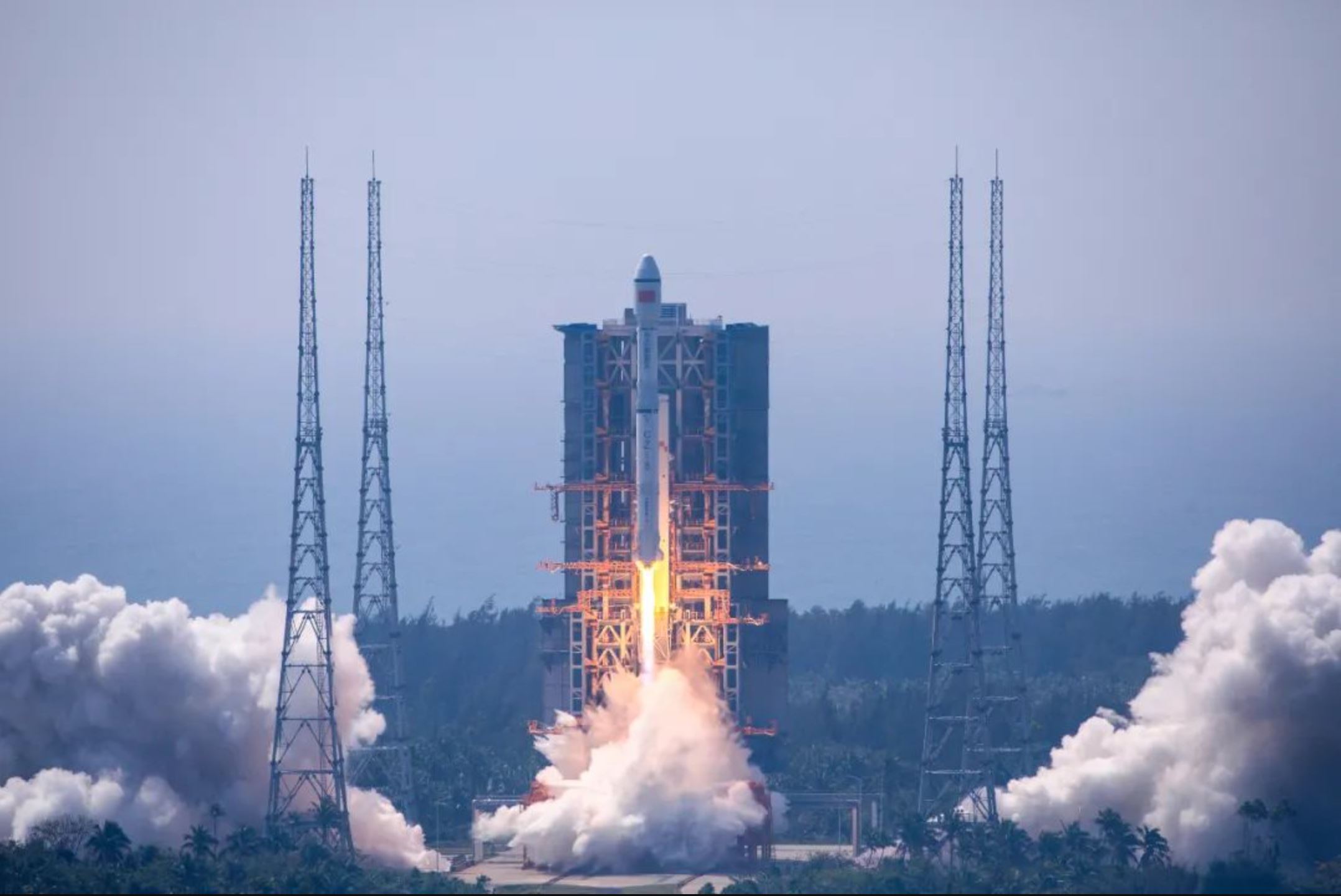HELSINKI — China has broken ground on a new launch pad dedicated to commercial solid rockets to help boost access to launch facilities.
The new pad for solid rockets and its related infrastructure to provide power, test, and other facilities is expected to be finished within 180 days, China Space News, an official space sector outlet, reported June 14.
The new project is part of the wider Hainan Commercial Launch Site for which two pads are currently under construction. One will be dedicated to kerolox launchers and another to methalox launch vehicles. The first launch of a liquid rocket from the commercial spaceport is expected in early 2024.
The new, third pad will provide a growing array of solid propellant launch vehicles with more options and opportunities to launch, amid apparent growing demand in China for launch capability.
Together with sea launch facilities established at Haiyang on the coast of China’s eastern province of Shandong, the new launch pad will provide new opportunities for commercial companies to launch solid rockets. The new solid rockets and launch facilities will provide China overall with greater launch flexibility and redundancy.
The new Hainan Commercial Launch Site is a joint venture between the Hainan provincial government, China’s main space contractor CASC and its sister state-owned space and defense giant CASIC, and China Satnet, the state-owned entity charged with managing the construction of China’s planned communications megaconstellation.
State-owned and related spinoffs from CASC, CASIC and the Chinese Academy of Sciences, as well as commercial and private companies including iSpace, Galactic Energy and Orienspace are engaged in launching and developing solid propellant launch vehicles.
The Hainan Commercial Launch Site is located near the coastal Wenchang spaceport which opened in 2014 and hosts launches of China’s new, large kerosene-liquid oxygen rockets.
The coastal location offers new possibilities in terms of transportation, whereas the dimensions of rockets delivered to China’ inland launch sites are constrained by the country’s rail network.
Wenchang’s location at 19 degrees latitude also offers advantages in terms of lower fuel requirements for launches to some orbits.
Wenchang spaceport and the inland sites at Jiuquan, Taiyuan and Xichang are administered by the People’s Liberation Army, with government and military-related missions prioritized. Jiuquan in the Gobi Desert currently hosts the vast majority of commercial launches, with new, supplemental facilities for solid and cryogenic propellant rockets.
The new Hainan launch complexes are intended to provide greater and more flexible access to launch facilities for commercial launch activities.
It is also expected to allow the Long March 8, a newer, kerolox medium-lift rocket, to increase its launch cadence. It currently uses the same pad at the national Wenchang spaceport as the Long March 7—used to launch Tianzhou cargo spacecraft to the Tiangong space station—and Long March 7A for launches to GTO, and thus its opportunities to launch are constrained.
A plan to mass produce CASC’s Long March 8 is linked to China’s plans to launch its 13,000-satellite megaconstellation. The Hainan Commercial Launch Site is part of a plan to establish the island as a commercial space hub. It aims to attract space startups engaged in rocketry, satellite manufacturing and data application, while also seeking to engage in international cooperation.
